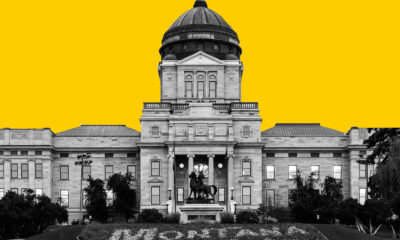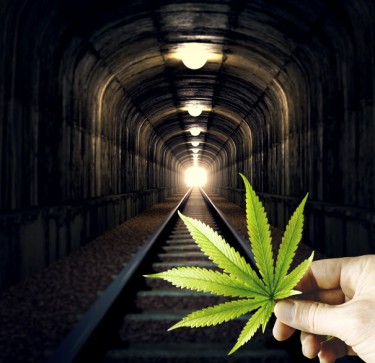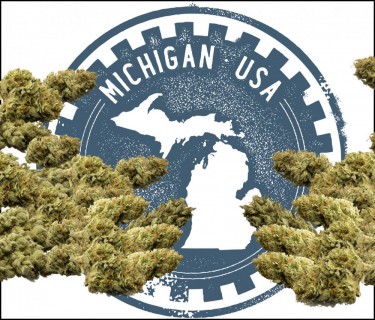Cannabis News
Are Psychedelics Cannabis 2.0? – The Benzinga Psychedelics Conference 2023
Published
2 years agoon
By
admin

A funny thing happened on the way to Fort Lauderdale having Biblical flooding after the Benzinga Cannabis Capital Conference in Miami, with the airport closed for 48 hours, Cannabis.net got to stick around and cover the psychedelics show that follows the Benzinga cannabis show by one day.
The great part of this one-day show for us was that we got to sit through 8 hours of speakers and presentations since we were neophytes on the subject of “where psychedelics are legally, medically, etc”. Instead of staying in the hallways and meeting people like a cannabis show, this show we decided to be students and sit through every presentation. It was one of best “learning” days we ever had, this time around, we got to be the student and listen and learn.
Let’s cover some the basics readers might have just like we had walking into the Psychedelics show.
Are psychedelics legal? – No, not at the Federal level, but Oregon and Colorado have legalized some psychedelics, and Quebec (Yes, we said Quebec!) has approved medical payments and use for some psychedelics. Vancouver, BC has decriminalized some psychedelics like mushrooms for personal use only. Well, aren’t some “psychedelics” legal then? Yes and no, but that leads us to the next question.
What defines a psychedelic? This is up for some debate within the industry as what are the “must haves” in order to officially be a psychedelic, but you may have heard of Ketamine and MDMA (ecstasy if you are old enough) as being in the news, and around you in your life. These drugs are considered psychedelics by some and not by others in the industry. Hallucinate or not, you will be hearing alot about the serotonin 2A receptor (5-HT2AR) as the industry advances, as that is the brain area psychedelics work with the most.
Ketamine is a drug being used to help people with depression and anxiety, and it is has been, and is, completely legal at all levels, as in state and Federal. VA insurance programs approve payments and reimburses clinics for veterans who are prescribed ketamine sessions. This was the first honeypot for the psychedelics industry, set up ketamine clinics next to VA hospitals. Early investors and VC funds rushed into this model, but it appears to have cooled off by now with some early entrants bankrupt and closing clinics without notice. MDMA is right behind ketamine for mainstream medical use with PTSD, so clinics that dispense both may have a future, especially by the right veterans’ hospitals.
Ketamine and MDMA are the closest thing to revenue generating positive cash-flow type deals going on in the psychedelic space right now. Mushrooms, LSD, and psilocybin generate headlines and clicks but we are a long way from Federal legalization for these psychedelics. Medical use could be on the horizon in the same way cannabis has rolled out with a dichotomy in state and Federal laws. Some states may legalize medical use like cannabis, but changes to Federal law are a long time away.
Are psychedelics Weed 2.0? No, yes, kind of. No, it is not a blueprint of cannabis legalization history and pathways, but as they say, “history may not repeat, but it does rhyme”. There are some similarities between the two industries in trying to create revenue and get legitimacy. For example, the cannabis industry loophole around “hemp now gets you high” with Delta-8 and Delta-9, is similar to “novel molecules” in the psychedelic industry. A novel molecule is a brand-new compound or molecule you can create, patten, and get credit for down the road if a big discovery is made using your compound. So, LSD and psilocybin may be Schedule 1 illegal drugs, but this “novel compound that is one carbon atom different” is not illegal because it isn’t on the Controlled Substance List. Change an atom or covalent bond, and boom, you have a loophole around the CSA list of banned drugs, but that new compound does 99% of what the outlawed one does. Sound familiar if you are in the cannabis industry?
How Does Anyone Make Money in Psychedelics Right Now? – Well, not many are making money, let alone have revenue yet. Remember, this niche is 10 years behind the cannabis industry in emergence and public awareness. Almost every company is seeking investors and funding with the promise of future riches. Similar issues exist from the cannabis industry with taxation as well, Ketamine is subject to the same 280E tax as cannabis as the Federal level.
But wait, how is anyone going to get rich in psychedelics to begin with? The big homerun pitch is in the creation of as many novel molecules as a company can create and then get a patent on them as soon as possible. There are thousands of patents being sent in by early state psychedelic companies as part of a “molecule land grab” if you will, being that if you own the patent on XYZ novel molecule, and it later helps to reverse dementia in seniors, guess what? You just bought yourself an island.
Smart money is setting up their companies in this manner in order to someday, fingers crossed, be bought by Big Pharma. An IPO or sale to Big Pharma is the homerun, so having IP (intellectual property) many at experts feel is the key to a big payday down the road. If your company has a patent on 4,000 novel molecules that need research, the odds are better one of them turns out to be medically miraculous, as opposed to a company that may have 500 novel molecule patents. These novel molecules, many with no research being done on them, are like little lottery tickets for these very small psychedelics companies. Enveric Biosciences is publicly traded and is aggressive in following this model. Psychedelics also has an ETF, from AdvisorShares, the symbol is PSIL, for psilocybin.
Remember, many, many early psychedelic companies don’t even have revenue and are long-shot bets. If you want to move one step up the ladder to companies that at least have revenue, IP, and are publicly traded, check out the PSIL ETF, and click on their “holdings” tab. That is a good place to start for publicly investable psychedelics as of now.
The other way to create cash is to follow the trends and jump on one fast, like the ketamine clinics by VA hospitals. When we asked around how much do ketamine sessions cost, many told us it is sold as a 6-pack of therapy, each session lasts about 5 hours, and it costs between $2,500 and $3,000. Wowza! We figured out once VA insurance agreed to pay, why clinics around VA hospitals become big!
Did you know the industry has its own Weemdaps called HealingMaps? It shows you locations for ketamine and MDMA clinics as well as gives the user the ability to overaly VA hospital information to see where there could be a busienss opportunity to set up a clinic.
What are the problems in industry? – No investment money and a long runaway that could veer in many directions and take years to get legal stature in the US. Telemedicine has also hit them where it hurts as ketamine can now be approved and shipped to your house for self-dosing through most telemedicine doctors.
What are the 3 debates smart people are having in the industry?
-
Hallucinate vs. Non-Hallucinate – Enveric is working on taking the “tripping balls” part of psychedelics due to medical purposes and not all patients may want or feel comfortable with that part of the new drugs. This has the industry torn on if it is a good idea or will have the same results as the “real deal” psilocybin. If you are in the cannabis industry and understand the “entourage effect argument vs. just individual cannabinoids” then you get the drift here. Smart people on both sides are debating if the medical benefits and overall experience will be worth it or altered too much by taking out the “tripping part”. On the other hand, if grandma can have dementia reversed and she and you don’t want her tripping balls, well…
-
Clinics vs Retreats – Experts have different opinions on whether the industry should be built around clinics and regular treatments, or retreats and destination places to experience a psychedelics breakthrough. Ayahuasca retreats or sessions at your local strip mall? There is no right answer, and usually the best solution lies in between the two extremes.
-
Telemedicine vs. traditional therapist relationships (aftercare debate)– Telemedicine, like in all areas, is eating into the margins of the traditional medical industry, same with psychedelics. You can get ketamine doses with telehealth approval now and do them at home. Coming out of ketamine session is a wild card and much like coming out of an LSD or shroom experience, counselors and people may be needed to help you. Help can mean psychological help or psychical help, thinking of coming out of anesthesia after a colonoscopy, the nurse’s monitor, give you some time, some crackers and juice, etc.
Final Thoughts
The psychedelics industry in 10 to 15 years behind the cannabis boom and bust, so you have plenty of time to research companies and learn about the field. Like all industries coming out of the darkness of society and into the light, there will be some educated and responsible people trying to lead the movement, as well as some more “interesting swashbucklers”. That is just what you get with an industry like weed, gambling, or shrooms becoming legal, some good intelligent science guys telling you why we can even talk about this stuff being legal, and some “get rich quick guys”. While the morning session of the Benzinga conference rolled out a few characters that looked like they were villain-rejects from the 1972 Adam West Batman show, there were also intelligent, educated, well-spoken people who you could learn from and ask questions to and about the industry.
While psychedelics isn’t Marijuana 2.0, it does have some similarities around the novel molecule Delta-8 story, the entourage effect vs hallucination or not hallucinate, etc. In the end this makes sense when you think about those drugs coming out of the 1960s. The same guy who sold you weed back then probably sold you mushrooms and LSD, but the percentage of people smoking weed compared to trying psychedelics is probably 10 to 1. Hence, the cannabis movement has a much broader base and support than the “let’s legalize LSD” crowd, at least for now.
Like any industry that has so many pre-revenue companies, be very careful who you give your money to in this space right now. Super long shot dreamers may outnumber normal long shots by 10 to 1. Many people will be sold on “we have the next medical breakthrough coming in novel molecule XCX” but without FDA testing and IP, many of those stories will run out of money well before their investors see any positive returns. Just like betting on early state bio-pharma companies, for every single one bought by Pfizer, there are 100 that failed.
The industry has just barely begun, buyer beware and due dilligence will be key to many investment decisions right now.
BENZINGA CANNABIS CAPITAL CONFERENCE, READ ON…
5 THINGS I LEARNED AT THE BENZINGA CANNABIS CONFERENCE, MIAMI!
You may like
-


Trump research cuts threaten cannabis studies, poses rescheduling questions
-


Cocaine Hub Seized by Rebels, Thwarting Colombia’s ‘Total Peace’
-


SEO for Cannabis? – How to Build Top Rankings for Your Cannabis Brands in 2025
-


Montanans must activate to protect legalization in 2025
-


Analysis: Don’t hold your breath for legalization under Trump 2.0
-


Pot for Potholes? – Michigan Plans to Let Cannabis Tax Revenue Fix the Growing Pothole Problem in the State
Cannabis News
SEO for Cannabis? – How to Build Top Rankings for Your Cannabis Brands in 2025
Published
23 hours agoon
February 26, 2025By
admin

How to Cannabis SEO in 2025 like a Pro!
Running a cannabis brand online is like trying to play Monopoly with one hand tied behind your back while the banker keeps changing the rules. Trust me, I’ve been in this game long enough to know the frustrations. You can’t advertise on Facebook, Instagram treats you like a digital pariah, and Google Ads? Forget about it. One wrong move and poof – your social media accounts vanish faster than a fresh batch of edibles at a music festival.
But here’s the kicker: while traditional advertising channels remain firmly closed to our industry, there’s one path that’s still wide open – organic search traffic. That’s right, I’m talking about SEO (Search Engine Optimization), the art and science of getting your website to show up when people search for cannabis-related content.
Now, I know what you’re thinking. “But Reg, how am I supposed to compete with giants like Marijuana.com who’ve been hoarding prime keyword real estate since before some of us were born?” Well, my friend, this is where things get interesting. You see, while the big players might have a stranglehold on broad terms like “marijuana” and “cannabis,” there’s a whole world of untapped potential in long-tail keywords and niche topics.
The challenge isn’t just about showing up in search results – it’s about showing up in front of the right people. And let’s be honest, if you’re not on the first page of Google, you might as well be selling oregano in a dark alley. The drop-off rate from page one to page two is steeper than that time I tried to explain terpenes to my grandmother.
But fear not! Today, I’m going to share something that could be a game-changer for smaller cannabis brands operating on a shoestring budget: how to leverage artificial intelligence for SEO. That’s right – we’re going to turn the tables on our corporate overlords by using their own tools against them.
So grab your favorite strain, settle in, and let’s dive into how AI can help level the playing field in the cannabis industry’s digital landscape.
Alright, before we dive into the wonderful world of AI-powered cannabis SEO, we need to get our fundamentals straight. Think of SEO as a digital game of hide and seek, except you’re trying to help Google find you while playing by an ever-changing set of rules.
Let’s start with the basics. Meta tags are like the ingredients list on your favorite edible – they tell search engines what your content is about. These include your title tags (what shows up in search results), meta descriptions (that little preview text), and headers (those H1s, H2s, etc. that break up your content). Keywords are the specific terms you want to rank for, while long-tail keywords are more specific phrases – think “best organic CBD oil for anxiety” versus just “CBD oil.”
Now, here’s where many cannabis brands get it wrong – they stuff their content with keywords like a rookie packing their first bowl. “Cannabis dispensary near me cannabis products buy cannabis cannabis deals cannabis cannabis cannabis…” You get the idea. This is what we call “black hat” SEO, and let me tell you, Google hates this more than the DEA hates fun. Pull this stunt, and your site might disappear from search results faster than your stash during a drought.
There’s a crucial difference between organic keyword ranking and paid advertising. Organic ranking is like growing your own – it takes time, patience, and proper care, but the results are worth it. Paid advertising (which isn’t available to cannabis brands anyway) is like buying from a dispensary – quick results but costly. Since we’re locked out of paid channels, organic is our best friend.
Remember this golden rule: while you’re optimizing for search engines, you’re writing for humans. Your content needs to be the digital equivalent of premium flower – high quality, well-cured, and delivering real value. Think of your website as a budtender who needs to both attract customers and keep them coming back.
Google tracks various metrics to determine your site’s quality. Time on page (how long visitors stick around) is like customer retention at a dispensary. Bounce rate (how quickly people leave) is like customers walking out without buying anything. Click-through rate (how many people click your link in search results) is like foot traffic. All these metrics tell Google whether your content is worth recommending to others.
The tricky part? Google’s algorithm is more mysterious than your dealer’s “special” strain. It uses over 200 ranking factors, and they change more often than dispensary daily specials. But one thing remains constant: quality content that serves user intent will always win in the long run.
Now that we’ve covered the fundamentals, let’s talk about crafting an SEO strategy specifically for cannabis brands. Because in this industry, we’re not just competing with other businesses – we’re fighting against decades of stigma, restrictive policies, and platforms that treat us like we’re selling contraband instead of a legal product.
Listen up, cannabis entrepreneurs – before you start throwing keywords around like confetti at a dispensary grand opening, you need to understand exactly who you’re trying to reach. And I’m not talking about some vague notion of “people who like weed.” We need to get specific.
Enter the buyer persona – your ideal customer’s digital avatar. Let me give you an example: Meet “Mindful Michelle,” a 35-year-old yoga instructor who uses cannabis to manage anxiety and enhance her meditation practice. She’s health-conscious, researches products thoroughly before buying, and values organic, sustainably produced cannabis. She shops primarily at boutique dispensaries and follows wellness influencers on Instagram. Her annual income is $65,000, and she’s willing to pay premium prices for quality products.
See what I did there? We’ve created a detailed profile that helps us understand not just who our customer is, but how they think and what they’re looking for. This brings us to user intent – the holy grail of SEO strategy.
Let’s say Michelle is looking for information about CBD for anxiety. She might start with a broad search like “CBD for anxiety,” but as she learns more, her searches become more specific. She might eventually search for “organic full-spectrum CBD oil dosage for meditation” – that’s a long-tail keyword gold mine right there. Why? Because it shows high intent (she’s looking for specific information), and there’s likely less competition for this precise phrase than broader terms.
When crafting content around these keywords, you’ll want to follow some best practices:
-
Use your target keyword in the title (naturally, not forced)
-
Include it in the first 50 words of your content
-
Sprinkle related terms throughout (think “anxiety relief,” “mindfulness,” “natural remedy”)
-
Include outbound links to reputable sources (like scientific studies)
-
Create internal links to your other relevant content
-
Use header tags (H1, H2, H3) to structure your content logically
But here’s the thing about content length – Google loves comprehensive content that thoroughly addresses user questions. We’re talking 1,500+ words for main pages and blog posts. “But Reg,” you might say, “isn’t that a bit much?” Not if you’re actually solving problems and providing value.
Think about it this way: if Michelle lands on your page about CBD and anxiety, and you’ve got a thorough, well-researched article that addresses dosing, different consumption methods, potential interactions, and the science behind how CBD affects anxiety – she’s likely to stick around. More importantly, she’s likely to bookmark your site and come back when she’s ready to make a purchase.
This is how you build trust in the cannabis space – by becoming a reliable source of information first, and a seller second. Remember, in an industry where traditional advertising is restricted, your content needs to work twice as hard.
Now, I know what you’re thinking – “Reg, this sounds like a lot of work!” And you’re right. Creating comprehensive, SEO-optimized content that actually provides value is no small task. But that’s where our AI friends come in handy. Let me show you how to make this process a whole lot easier…
Alright, my cannabis-loving friends, it’s time to unleash the robots! Not the terrifying kind that might take over the world, but the helpful ones that’ll make your SEO efforts smoother than a well-cured top shelf bud.
Let me tell you, creating high-quality, media-rich content used to be harder than explaining terpenes to your grandma. You’d need a writer, photographer, graphic designer, video editor – the works. But now? We’ve got an entire digital army at our disposal, and it’s surprisingly affordable.
Here’s my tried-and-true workflow that’ll have you pumping out content faster than a hydroponic setup on steroids:
First stop: Perplexity.AI. This bad boy is like having a research assistant who never sleeps and actually remembers everything they read. Feed it your topic, and it’ll spit out relevant scientific studies, market research, and questions you wouldn’t have thought to ask. Want to write about CBD and sleep? It’ll dig up everything from clinical trials to user demographics.
Next, slide into your favorite AI chatbot – whether that’s ChatGPT, Claude, or Grok. If you’re feeling fancy, hit up Openrouter and sample them all like you’re at a cannabis cup. These tools will help you craft content that’s more engaging than your local budtender’s strain recommendations. (I could write a whole article just on prompt engineering, but that’s a story for another day.)
Now, here’s where it gets fun. Need images? Leonardo.ai or MidJourney are your new best friends. Want a stunning visual of cannabinoids interacting with neural receptors? Or maybe a chill lifestyle shot of someone enjoying their evening routine? These AI tools can create custom, copyright-free images that look better than most stock photos. Pro tip: Have your AI writing assistant generate image prompts based on your article – it’s like having a creative director in your pocket.
But why stop at text and images? Let’s get audio in the mix with Elevenlabs. Turn your article into a podcast-style recording that people can listen to during their commute. Then, take those AI-generated images, throw them into Capcut with your audio, and boom – you’ve got a video ready for YouTube. That’s three different ways for people to consume your content, and three different chances to keep them engaged.
Here’s the real kicker – you can “spin” your article (that’s industry speak for rewriting while maintaining the core message) a few times and publish it on platforms like Substack, Medium, or Reddit. Link these back to your original piece, and you’re building a web of high-authority backlinks that’ll make Google happier than a kid in a candy store.
The best part? This entire process takes about 2-3 hours once you get the hang of it. You’re creating a content ecosystem that provides value across multiple platforms and formats, all while building those precious SEO signals that Google loves.
Remember though, always keep your target keywords in mind throughout this process. Have your AI assistants strategically place them in your content, headers, and meta descriptions. It’s like leaving a trail of breadcrumbs that leads straight to your website.
And this, my friends, is just scratching the surface. The robots are here to help, and they’re making premium content creation more accessible than ever. Time to embrace the future and let AI help you climb those search rankings!
What I’ve shared here is just the tip of the cannabis cola, if you will. It’s like I’ve taught you how to pack a bowl, but there’s still so much to learn about the whole grow operation. However, these fundamentals should be enough to get you started on your SEO journey.
Here’s the deal: aim to post 2-3 solid pieces of content each week. And I mean solid – not that schwag content that’s just recycled from other sites. We’re talking premium, home-grown content that your users will actually want to consume. Share it across your social platforms (where allowed, of course – we all know how touchy these platforms can be about cannabis content), and weave your products or services into the narrative naturally. Nobody likes a pushy salesperson, but everyone appreciates genuine expertise and helpful advice.
Think of it like growing a healthy cannabis plant – you need consistent care, the right nutrients, and most importantly, patience. Keep feeding your audience valuable content, and they’ll reward you with engagement. When Google sees users spending time on your site, sharing your content, and coming back for more, it’s like getting a five-star review from the most important dispensary rating system in the digital world.
Remember, success in cannabis SEO isn’t about gaming the system – it’s about actually being useful to your target audience. Solve their problems, answer their questions, and become their trusted source of information. Do this consistently, and Google will naturally want to recommend you to others searching for similar content.
And here’s a final nugget of wisdom: the cannabis industry is constantly evolving, and so should your SEO strategy. Stay curious, keep testing new approaches, and don’t be afraid to experiment with different content formats and topics.
Now get out there and start creating some killer content. Your future customers are out there searching for you – it’s time to help them find you.
Good luck, and may your rankings be high and your bounce rates low!
https://www.reddit.com/r/weedbiz/comments/1ig1nwq/why_are_most
_cannabis_seo_agencies_scams_anyone/
CANNABIS SEO GOES HIGH TECH, READ ON…
Cannabis News
Pot for Potholes? – Michigan Plans to Let Cannabis Tax Revenue Fix the Growing Pothole Problem in the State
Published
2 days agoon
February 25, 2025By
admin

In recent months, Michigan has found itself at the intersection of two significant issues: the deteriorating state of its roads and the burgeoning cannabis industry. Governor Gretchen Whitmer’s ambitious plan to allocate funds from marijuana taxes to repair potholes has ignited a lively debate within both the political and cannabis communities. As the state grapples with aging infrastructure, the proposal raises questions about funding priorities, industry sustainability, and consumer impact. This article delves into the details of the plan, its implications for Michigan’s cannabis sector, and the broader conversation it has sparked.
The State of Michigan’s Roads
Michigan is notorious for its rough roads. According to a report from the American Society of Civil Engineers, nearly 40% of Michigan’s roads are in poor condition, leading to increased vehicle damage and safety concerns for drivers. The state has long struggled with funding for road repairs, often relying on gas taxes and federal funds that have proven insufficient to address the growing backlog of maintenance needs.
The Economic Impact of Poor Infrastructure
The economic ramifications of poor road conditions are profound. Businesses face higher transportation costs due to vehicle wear and tear, while residents experience longer commute times and reduced quality of life. Additionally, inadequate infrastructure can deter new businesses from setting up shop in Michigan, further stifling economic growth.
Governor Whitmer’s Proposal
In response to these pressing issues, Governor Whitmer announced a comprehensive $3 billion plan aimed at revitalizing Michigan’s roads. The proposal focuses on innovative funding strategies, including a significant increase in taxes on marijuana products.
Funding Breakdown
The proposed funding plan includes:
-
$1.7 billion from corporate taxes and technology companies.
-
$1.2 billion from increased gas taxes.
-
$500 million cut from unspecified spending areas.
-
A 32% wholesale tax on marijuana products projected to generate $470 million annually.
This ambitious approach aims not only to repair potholes but also to create a more sustainable funding model for ongoing infrastructure needs.
The Role of Cannabis Tax Revenue
Michigan legalized recreational marijuana in 2018, leading to a rapid expansion of the cannabis market. With over 400 licensed dispensaries and a thriving cultivation sector, tax revenue from cannabis sales has become a significant source of income for the state. Currently, marijuana products are subject to a 10% excise tax and a 6% sales tax; however, Governor Whitmer’s proposal seeks to elevate this wholesale tax substantially.
Reactions from the Cannabis Community
The announcement has elicited mixed reactions from various stakeholders within Michigan’s cannabis community. While some applaud the idea of using cannabis tax revenue for public goods like road repairs, others express concern about the potential negative consequences for the industry.
Support for the Initiative
Many proponents argue that using cannabis tax revenue for infrastructure improvements is a logical step forward. They contend that as one of the most lucrative sectors in Michigan’s economy, the cannabis industry should contribute significantly to public services.
-
Public Good Argument: Advocates argue that better roads benefit everyone, including those in the cannabis industry who rely on transportation for distribution and customer access.
-
Community Investment: Some believe that investing in infrastructure will enhance overall community well-being and support local businesses.
Concerns About Increased Taxes
On the other hand, several dispensary owners and industry advocates express serious concerns about the proposed tax increase:
-
Impact on Consumers: Many fear that raising taxes on marijuana products will lead to higher prices for consumers. One dispensary owner noted that some products could see price increases close to 90%, making legal cannabis less competitive against black market alternatives.
-
Market Viability: There is apprehension that higher prices could drive consumers back into the black market, undermining years of progress made in legalizing and regulating cannabis sales.
-
Small Business Struggles: Smaller dispensaries may struggle more than larger corporations to absorb increased costs, potentially leading to business closures and reduced competition in the market.
Broader Economic Implications
The intersection of road funding and cannabis taxation raises broader questions about economic policy in Michigan. As states across the U.S. grapple with similar challenges—balancing public needs with industry growth—Michigan’s approach may serve as a case study for others.
Balancing Act: Public Needs vs. Industry Growth
Governments must find ways to fund essential services while fostering economic growth in emerging industries like cannabis. The challenge lies in ensuring that taxation does not stifle innovation or drive consumers away from legal markets.
Potential Alternatives
Some industry representatives have called for alternative funding solutions that do not rely solely on increased taxation:
-
Reallocation of Existing Funds: Advocates suggest examining current budget allocations to identify areas where funds can be redirected toward road repairs without imposing new taxes.
-
Public-Private Partnerships: Collaborations between government entities and private companies could provide innovative solutions for funding infrastructure projects without burdening taxpayers or industries.
-
Incentives for Local Businesses: Offering incentives or tax breaks for local businesses involved in road repair projects could stimulate job creation while addressing infrastructure needs.
Political Landscape
Governor Whitmer’s proposal has also ignited discussions within Michigan’s political landscape. Republican lawmakers have voiced opposition to increasing taxes on marijuana products as part of road funding strategies.
Republican Counterproposal
In response to Whitmer’s plan, Republican lawmakers have proposed an alternative $3 billion road funding strategy that does not rely on tax increases. This plan emphasizes reallocating existing funds rather than imposing new taxes on any industry.
Bipartisan Cooperation Challenges
While both parties agree on the need for better roads, finding common ground on how to fund these improvements remains elusive. The debate over using marijuana tax revenue highlights broader ideological differences regarding taxation and government spending priorities.
The Future of Cannabis Regulation in Michigan
As discussions around Governor Whitmer’s proposal continue, they underscore broader trends in cannabis regulation across the United States. States that have legalized marijuana are increasingly looking at how best to leverage tax revenue generated from this burgeoning industry.
Lessons Learned from Other States
States like Colorado and California have faced similar challenges regarding how best to utilize cannabis tax revenue. In Colorado, funds have been allocated toward education initiatives and public health programs; however, debates continue over how effectively these funds are being utilized.
Ensuring Transparency and Accountability
For Michigan’s approach to be successful, it will be essential to establish transparency and accountability measures regarding how cannabis tax revenues are spent. Ensuring that funds are directed toward meaningful infrastructure improvements will be critical in maintaining public support for both road repairs and continued investment in the cannabis industry.
Conclusion
Governor Gretchen Whitmer’s plan to fix potholes using marijuana tax revenue has sparked an important conversation about infrastructure funding and its relationship with emerging industries like cannabis. While many see this as an innovative solution to longstanding issues with road conditions in Michigan, others raise valid concerns about potential negative impacts on consumers and small businesses within the cannabis sector.
As discussions evolve, it will be crucial for stakeholders from government officials to industry representatives to engage collaboratively in seeking solutions that benefit both public infrastructure needs and economic growth within the cannabis community. The outcome of this debate may not only shape Michigan’s future but also serve as a model for other states navigating similar challenges as they balance public service needs with burgeoning industries’ growth potential.
MICHIGAN GOES CANNABIS GREEN, READ ON…


People in the cannabis market are now focusing on several different cannabis compounds to develop new marijuana-based products. THCA is a well-known compound that people now embrace. People receive different benefits from using the chemical compound Tetrahydrocannabinolic acid THCA. This article will outline the benefits and uses of THCA Flower.
What is THCA Flower?
THCA flower is raw cannabis with high levels of THCA. The product does not present psychoactive effective can be consumed raw. However, when it is exposed to heat it can present some side effects since it converts to THC. The idea shows that smoking it can present some THC effects. A lot of people look for thca flower clearance deals to experience its benefits without spending more money. Raw cannabis products like THCA flower are widely known due to its different uses.

Benefits of THCA Flower
- Anti-Inflammatory Properties
THCA is widely used for its ability in reducing inflammation. Therefore, if you often suffering from inflammatory conditions, then including THCA in your routine can boost your health outcomes. This can reduce the risks you are exposed to.
Several studies show that THCA interacts with the body’s endocannabinoid system which regulates several physiological processes. This makes it a natural option for managing conditions like arthritis and muscle soreness.
THCA have neuroprotective properties, making it an ideal option for people that want to seek support brain health. The idea shows that THCA can help you manage neurodegenerative conditions like Alzheimer.
Including THCA flower in your routine can help promote long-term cognitive wellness, helping you stay focused. For this reason, if you need to explore its benefits and affordability, then THCA Flower Clearance is an ideal choice for you.
Uses of THCA Flower
You can enjoy THCA flower by consuming it raw. You can also choose to add it in smoothies, juices, or salad for a nutrient-packed addition to your diet. Consuming the product raw help preserves its compound, allowing you to enjoy the required benefits without incurring any psychoactive implications.
If you are a wellness enthusiast, then this product is the best option to include in your daily life. Its naturalness complements different recipes, which can be beneficial, especially if you love herbal meals.
Furthermore, THCA flows can be used to make homemade tropical products like cream or salved. These products are used to soothe pain and inflammation when applied directly.
Experimenting different preparations can help you create a customized solution that addresses your specific needs. Combining THCA with natural ingredients like coconut oil or essential oils can increase the soothing effect.
Therefore, a THCA flower is a popular product in the cannabis industry due to its increased benefits and uses. It contains anti-inflammatory and neuroprotective properties, which present potential health benefits for people with different needs. Examining these products through THCA Flower Clearance options can offer you ideal insights into its advantages without breaking the banks. If you are new to cannabis, then thca flower clearance can be the best option to choose.

Trump research cuts threaten cannabis studies, poses rescheduling questions

Cocaine Hub Seized by Rebels, Thwarting Colombia’s ‘Total Peace’

SEO for Cannabis? – How to Build Top Rankings for Your Cannabis Brands in 2025

Montanans must activate to protect legalization in 2025

Analysis: Don’t hold your breath for legalization under Trump 2.0

Pot for Potholes? – Michigan Plans to Let Cannabis Tax Revenue Fix the Growing Pothole Problem in the State

Karma Koala Podcast 232: Karina Bashir, Antithesis Law. Her work developing ESG & Corporate Practice Blueprint In The New Psychedelics Ecosystem

Medical cannabis registries show steep decline after launch of adult-use sales

Benefits and Uses of THCA Flower

The best weed-friendly travel spots of 2025

Distressed Cannabis Business Takeaways – Canna Law Blog™

United States: Alex Malyshev And Melinda Fellner Discuss The Intersection Of Tax And Cannabis In New Video Series – Part VI: Licensing (Video)

What you Need to Know

Drug Testing for Marijuana – The Joint Blog

NCIA Write About Their Equity Scholarship Program

It has been a wild news week – here’s how CBD and weed can help you relax

Cannabis, alcohol firm SNDL loses CA$372.4 million in 2022

A new April 20 cannabis contest includes a $40,000 purse

Your Go-To Source for Cannabis Logos and Designs

UArizona launches online cannabis compliance online course
Trending
-

 Cannabis News2 years ago
Cannabis News2 years agoDistressed Cannabis Business Takeaways – Canna Law Blog™
-

 One-Hit Wonders2 years ago
One-Hit Wonders2 years agoUnited States: Alex Malyshev And Melinda Fellner Discuss The Intersection Of Tax And Cannabis In New Video Series – Part VI: Licensing (Video)
-

 Cannabis 1012 years ago
Cannabis 1012 years agoWhat you Need to Know
-

 drug testing1 year ago
drug testing1 year agoDrug Testing for Marijuana – The Joint Blog
-

 Education2 years ago
Education2 years agoNCIA Write About Their Equity Scholarship Program
-

 Cannabis2 years ago
Cannabis2 years agoIt has been a wild news week – here’s how CBD and weed can help you relax
-

 Marijuana Business Daily2 years ago
Marijuana Business Daily2 years agoCannabis, alcohol firm SNDL loses CA$372.4 million in 2022
-

 California2 years ago
California2 years agoA new April 20 cannabis contest includes a $40,000 purse






